For MWM, stellar parameters refers to Teff, log g, and [Fe/H]. Not all pipelines return all values (for example, there are no [Fe/H] values for DA white dwarfs). Astra returns stellar parameters from eleven pipelines. However, each spectrum is analyzed only by a subset of these pipelines, depending on the instrument and target information.
Which file should I use for stellar parameters?
Which pipeline output you should use depends on your science. We include some guidance below about the pipelines’ areas of confidence. Many additional validation plots for the pipelines are included in their individual pipeline pages.
Before you apply for that Nobel Prize…
We note that for a small percentage of stars (<<1% for FGKM, but higher for compact binaries and other more complex spectra) the stellar parameters provided by the pipelines can be erroneous but the flag_bad will not be set.
Please check the Astra flags carefully for your stellar parameters
For one example, in Figure 1 (left) we show the comparison of ASPCAP and ApogeeNet temperatures, excluding all stars with flag_bad set for either pipeline. While most of the stars hotter than 20,000 K are flagged as bad in ASPCAP because of hitting the 20,000K grid edge, some stars survive as the plume of stars with low (~5000K) ASPCAP temperatures and high ApogeeNet temperatures. Figure 1 (right) zooms in on this region and color codes the stars by ASPCAP metallicity. We see that these stars are identified as very metal-poor in ASPCAP. As cool very metal-poor stars and very hot stars both are fairly featureless in the H-band, it is clear that ASPCAP found a local minimum at the incorrect value for these stars. Comparing the Teff between ASPCAP and ApogeeNet or considering Gaia XP spectra or other photometric information or looking at the spectrum would catch these rare missteps. We are working on improving flagging and stellar parameter derivation for future data releases, but please be aware that the stellar parameters are not perfect.
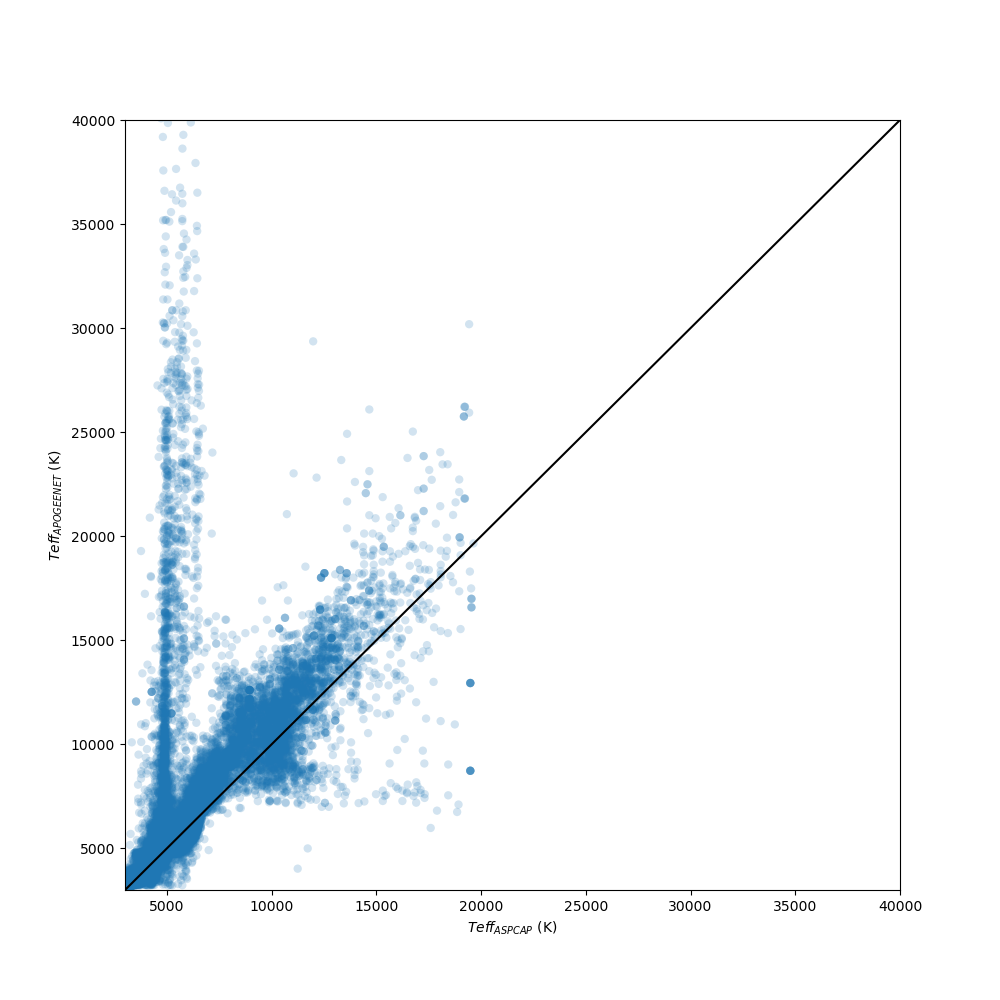
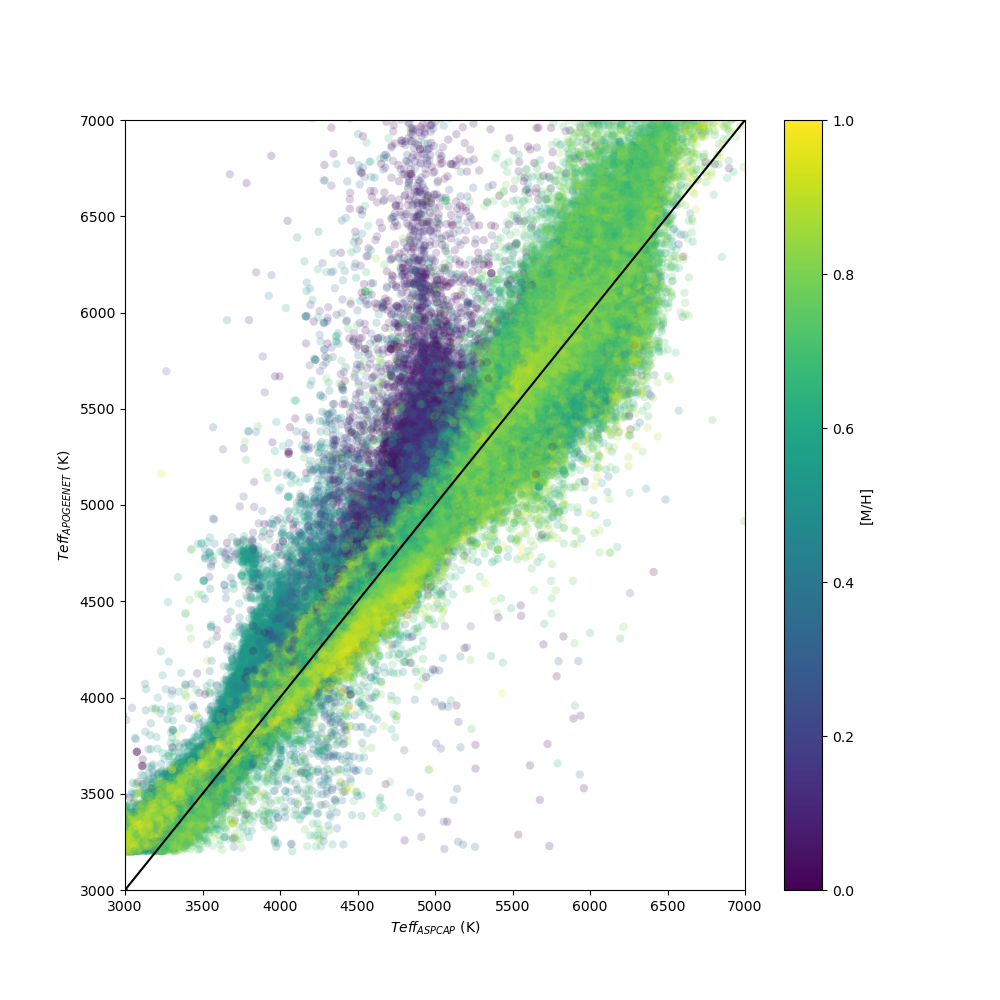
Overall View of Stellar Populations
If your science can use a whole bunch of stages of stellar evolution, we strongly encourage the use of the mwmLite file. Its construction is described here in the Astra pipeline pages. Advantages include
- If we don’t think we have good parameters, everything is a nan.
- There is a single set of parameters for each star, even if they have been observed by both BOSS and APOGEE
- We have done our best to pick the best pipeline between ApogeeNet and ASPCAP, for example.
Uncertainties Reported by Astra
The uncertainties reported in the astraAllStarASPCAP file are based on repeat observations of the same star (Casey et al. in prep). Comparison with fundamental parameters, such as temperatures from photometry or gravities from seismology, usually show larger scatter than the reported uncertainties, as they include systematic effects such as zero-point offsets. The paper linked on the individual pipeline pages provide such comparisons.
FGKM giant and dwarf stars
In general, we recommend using the Teff, log g, and [Fe/H] from ASPCAP if available with the following caveats:
- Teff for giants with Teff < 4000 K is based on an extrapolated correction that is different than DR17. If you would like a flat correction, the AstroNN summary file or StarHorse VAC have a DR17-like correction.
- [Fe/H] for M dwarfs should be corrected according to the prescription of Qiu et al. (2025)
- If your star is a YSO, APOGEENet gives better parameters (see Figure 1 below)
If an FGKM star only has a BOSS spectrum, we recommend in general BOSSNet for FGK and SLAM for M dwarfs. However, for metal-poor BOSS and Magellanic clouds stars, use the MineSweeper VAC. MineSweeper (Cargile et al. 2020) jointly fits observed spectra and broadband photometry to model isochrones and spectral libraries and has been vetted on halo stars. Because it takes time to process each star, it was not run on all BOSS stellar spectra.
Low-Mass YSOs
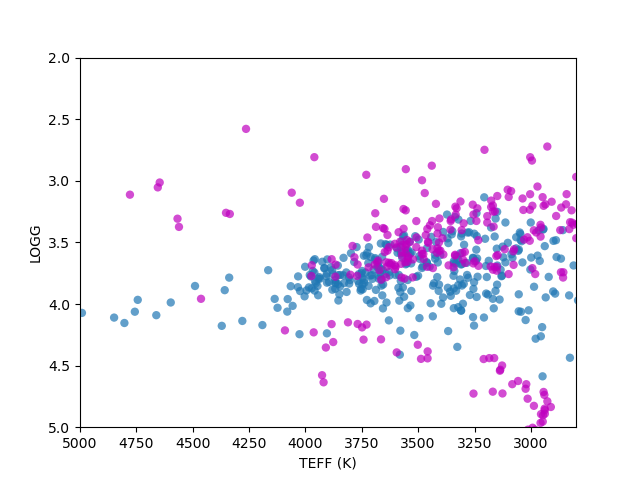
ApogeeNet has been trained on YSOs using labels from photometry. While ASPCAP has synthetic spectra in the YSO Teff – log g parameter space, these do not fit the YSO spectra well and do not include YSO phenomena such as veiling. Therefore, for YSOs we recommend using ApogeeNet parameters. Stars targeted at YSOs can be identified through their cartons.
OBA Stars
For stellar parameters from APOGEE spectra, we recommend in general the ASPCAP parameters for stars with Teff < 20,000 K, in part because ApogeeNet does not report [Fe/H] values for hotter stars because of concerns about the accuracy of the labels. We note that the ApogeeNet Teff agree better with the Gaia Extended Stellar Parameterizer for Hot Stars (ESP-HS) temperatures than do the ASPCAP Teff. (Figure 2) The ASPCAP grid does not extend beyond 20,000K, so at higher temperatures, only the ApogeeNet parameters are available.
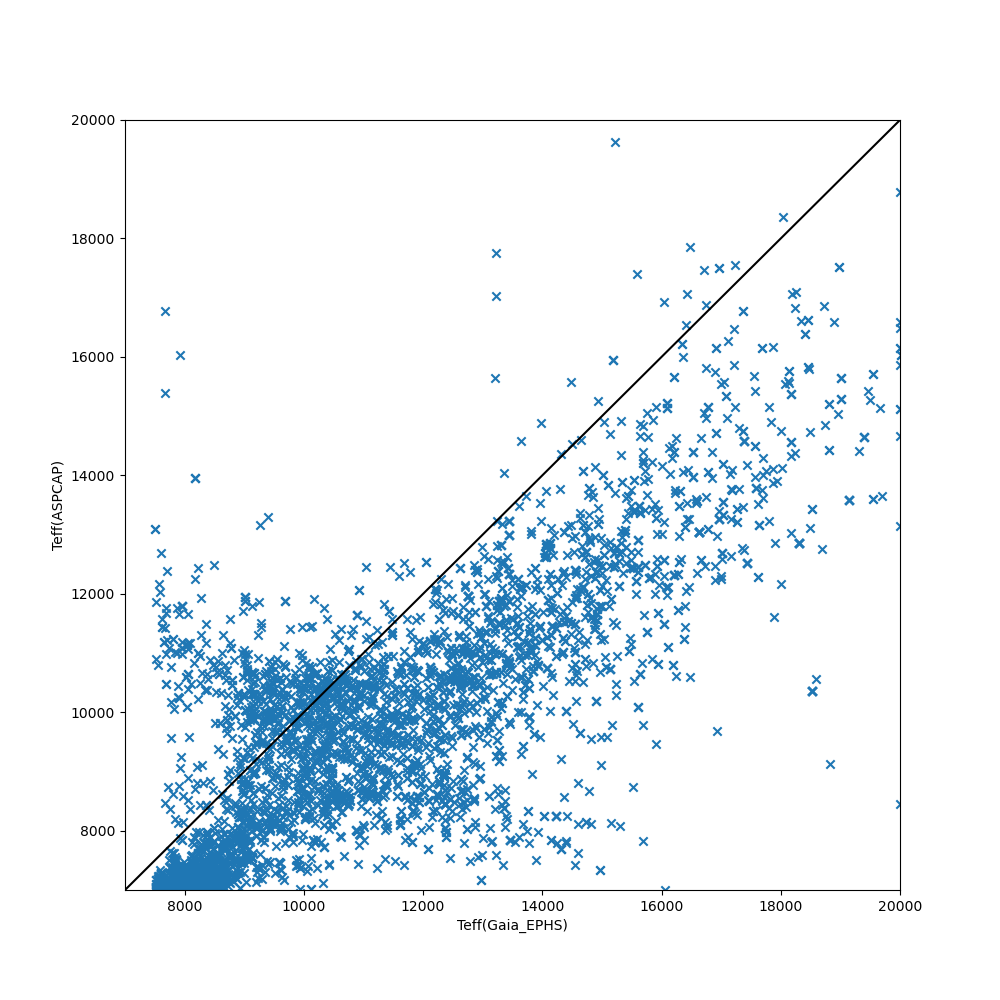
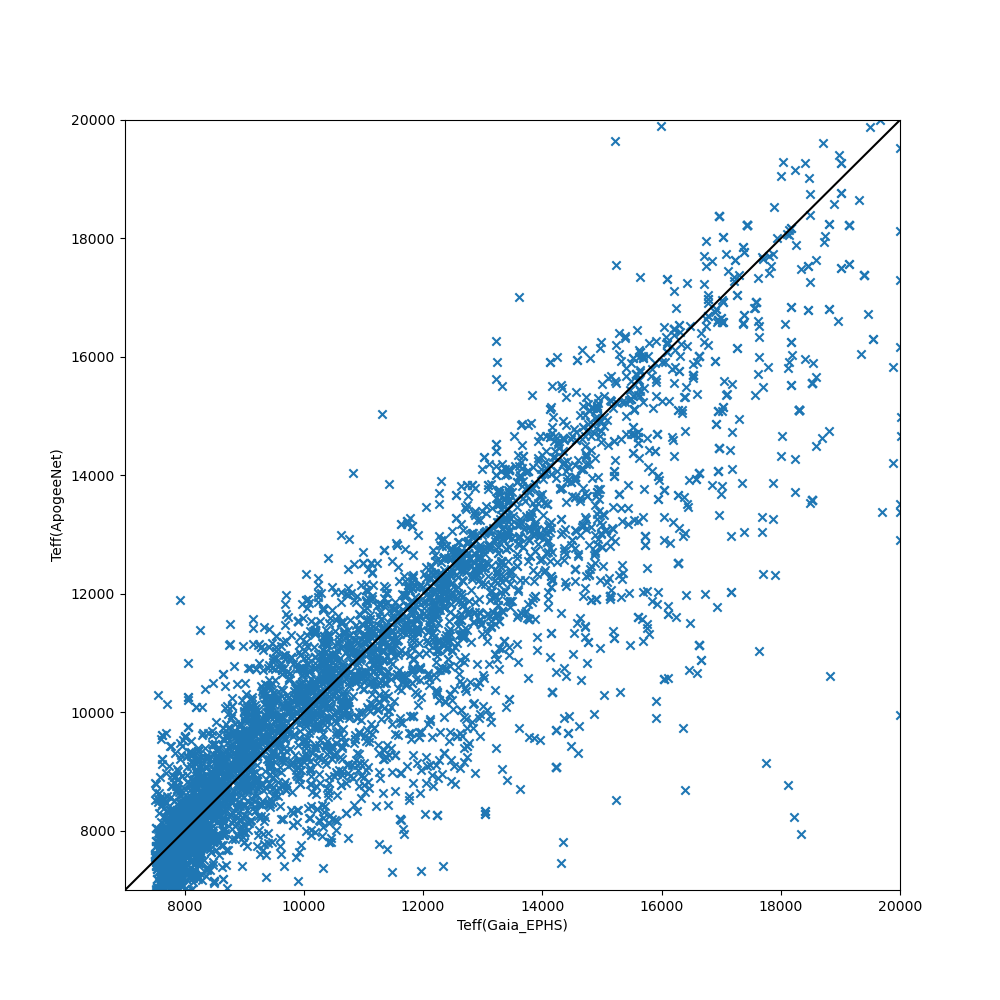
For stellar parameters from BOSS spectra, we recommend the BOSSNet parameters.
White Dwarfs and Compact Binaries
There are multiple parameters available for isolated white dwarf stars. Spectral typing from Snow White in Astra is generally accurate when class_prob > 0.6, though not in all cases; DR19 spectra with human visual vetting will be available in Gentille Fusillo et al. (2025). We recommend the DA spectroscopic parameters in Astra, but note they have not been corrected for the 3D effects of convection from Tremblay et al. (2013). We recommend radial velocities for DA white dwarfs calculated from corv from the Value-Added Catalog of Crumpler et al. (2025).
We recommend caution when using stellar parameters for accreting compact binaries. BOSSNet will try to get parameters, but the variability and complex nature of compact binary spectra makes determining their stellar parameters hard. If the spectrum is dominated by a white dwarf, SnowWhite parameters may be good, but again, looking at the spectrum is recommended.
